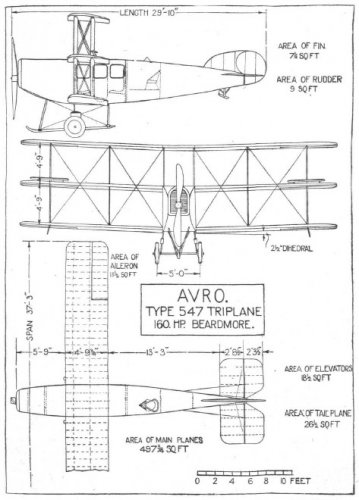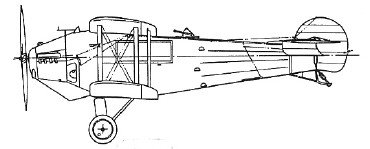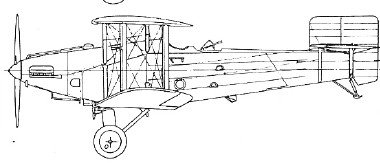Bailey
ACCESS: Secret
- Joined
- 24 July 2009
- Messages
- 308
- Reaction score
- 43
I have the following information from two sources on this project, and I'm trying to sort out which if either is correct. If anyone can provide further comments, I'd be very grateful.
From Avro Aircraft Since 1908 - A.J.Jackson - Putnam.
"Avro 550 - Earmarked either for a projected 3 seat Fleet Reconnaissance Triplane to Specification 37/22, or a European Civil Transport with 3 Rolls-Royce Condors to Specification 40/22."
From The British Aircraft Specification File - K.J.Meekcoms & E.B.Morgan - Air Britain.
"37/22 - The Avro Type 550 Amphibian Triplane design was for a single-bay, uniformly-staggered, narrow-chord triplane, with a gap between the centre plane above the two forward cockpits. The middle and upper wings were supported at their inboard ends by extended splayed cabane struts, and the outer ends of the three planes supported by single faired interplane struts. The oval section fuselage was positioned between the two lower planes, tapering to a monoplane tailplane and comma-shaped rudder. A twin-float undercarriage, with built-in wheels, was fitted. The aircraft was powered by a Bristol Jupiter engine. The type was not built."
Thanks in advance for any help, regards Bailey.
From Avro Aircraft Since 1908 - A.J.Jackson - Putnam.
"Avro 550 - Earmarked either for a projected 3 seat Fleet Reconnaissance Triplane to Specification 37/22, or a European Civil Transport with 3 Rolls-Royce Condors to Specification 40/22."
From The British Aircraft Specification File - K.J.Meekcoms & E.B.Morgan - Air Britain.
"37/22 - The Avro Type 550 Amphibian Triplane design was for a single-bay, uniformly-staggered, narrow-chord triplane, with a gap between the centre plane above the two forward cockpits. The middle and upper wings were supported at their inboard ends by extended splayed cabane struts, and the outer ends of the three planes supported by single faired interplane struts. The oval section fuselage was positioned between the two lower planes, tapering to a monoplane tailplane and comma-shaped rudder. A twin-float undercarriage, with built-in wheels, was fitted. The aircraft was powered by a Bristol Jupiter engine. The type was not built."
Thanks in advance for any help, regards Bailey.



